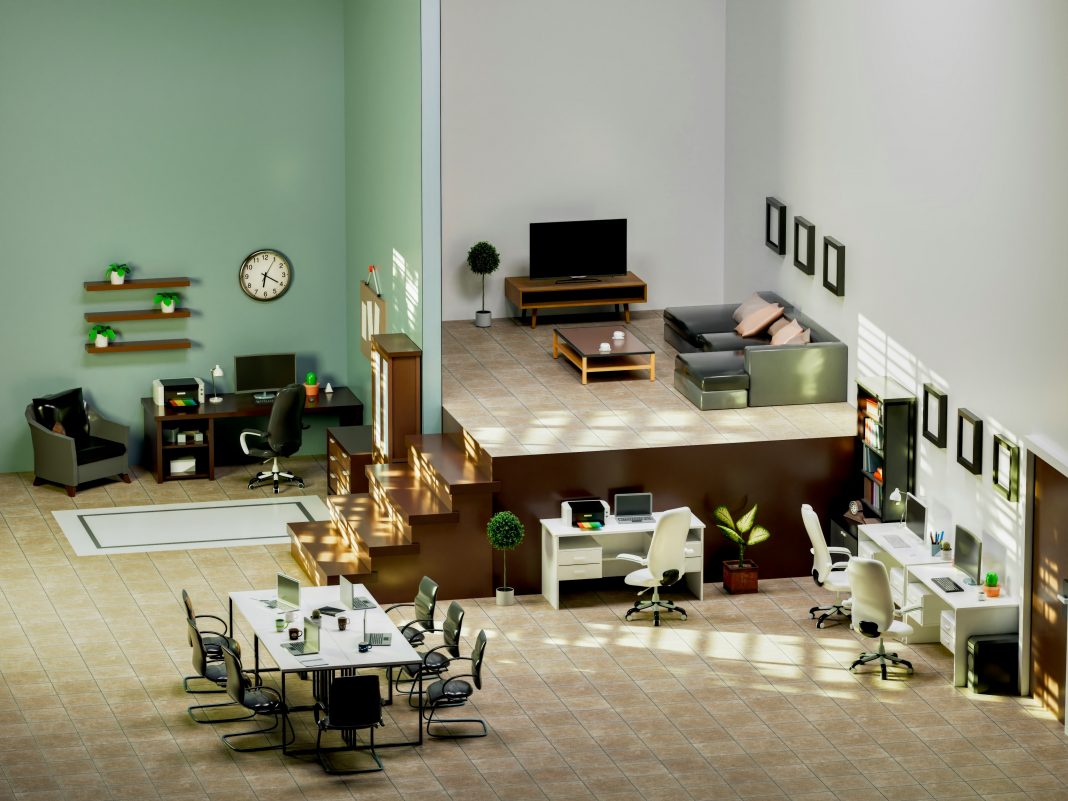American Structurepoint’s Brady Mick discusses what we can learn from the increasingly popular mixed-use development as we hit the 5 year anniversary of the Covid-19 lockdown.
When beautifully designed urban spaces and highly functional workplaces were emptied of their people for 24 months—and continuing today—the value of place was questioned to its core. Both urban design and workplace design have struggled to find a new equilibrium that fosters high performance, meaningful human experiences, and economic value in our post-pandemic reality. To that end, there is value in looking across and between these two sectors of design expertise to foresee a shared value that is developing anew: integrated ecosystem design.
Applying Mixed-Use Principles to Workplace Design
A mixed-use workplace embraces the idea that human behavioral needs must shape the work environment—just as modern cities integrate diverse functions to enhance urban life.
The traditional office layout mirrors outdated zoning laws, with fixed workstations and rigid space allocations. In contrast, mixed-use workplaces blur the boundaries among collaboration, focused work, and social engagement, offering choice and adaptability. Just as cities integrate residential, commercial, and entertainment spaces, workplaces should support deep focus, team collaboration, and casual interactions, empowering employees to determine their best ways of working. Employees, like urban residents, move between different modes of work throughout the day, from structured meetings to informal conversations and independent deep work.
Cities thrive on walkability, interaction, and energy, and workplaces must prioritize movement, team-based collaboration, and innovation rather than sedentary, isolated work. Offices should not be places employees are required to be, but places they want to be, encouraging high-performance teams, social cohesion, and a shared sense of purpose.
1. Sustainability
The pressures to produce, combined with the pressure to minimize environmental consumption, is increasing as decades move forward. As policy and purpose grapple with this tension, people realize the value of their cities and corporations in delivering sustainable practices for the future. Mixed-use design is increasingly focusing on sustainability, incorporating green building practices such as energy-efficient systems, sustainable materials, and green spaces within the mixed-use development. This approach aims to create environmentally friendly spaces that reduce carbon footprints and enhance urban livability, appealing to the values of people choosing to live and work together. Reference: AIA Framework for Design Excellence
2. The Actual Blend of Living and Working
The nature of work was accustomed to high variability and untethered location strategy long before the pandemic. Between 2012 and 2020, it was uncommon to find more than 50% of assigned workstations occupied at any given time. In truth, it is likely that the 2020 successful pivot from work in the office to work at home was created by these patterns of informal “remote” work. In response to the requirements for remote work, mixed-use developments are now incorporating flexible co-working spaces to cater to the modern workforce’s needs. This integration reflects the shift toward more adaptable work environments within urban settings, and the opposite opportunity is arising. Workplaces that will incorporate other aspects of living will create higher value for people who commit to the organizations to which they rely on their subsistence. Reference: US Census Data
3. Retail and Work
Additionally, there is a growing demand for mixed-use spaces where people can live, work, and find recreational and entertainment options nearby. This trend is reshaping retail environments and urban planning, as developers create vibrant, multifunctional spaces to meet contemporary lifestyle preferences. Reference: naiop.org
These developments indicate a broader movement toward creating dynamic urban environments that blend residential, commercial, and recreational spaces, reflecting changing societal trends and priorities. And these trends open doors to the questions that extend the value of companies investing in their places to support productivity from their people.
4. The Return to Urban Living
The return to urban living has been complex and evolving, influenced by factors such as remote work, housing affordability, and changing lifestyle preferences. The pandemic accelerated movement toward suburban and exurban communities, particularly areas located 30 to 60 miles from city centers. According to data from the U.S. Census Bureau (2023), many of the nation’s fastest-growing regions are in these areas, driven by the desire for more space and affordable housing, enabled by the widespread adoption of remote work.
Despite the rise in suburban migration, urban areas are seeing a resurgence, fueled by renewed interest in city living. Recent data from the U.S. Census Bureau indicates that urban populations are stabilizing and, in some cases, rebounding. For instance, large cities in the Northeast and Midwest, which previously experienced population declines, saw growth in 2023. Specifically, cities with populations of 50,000 or more in the Northeast grew by an average of 0.2%, while those in the Midwest increased by 0.1% between 2022 and 2023. This shift marks a reversal from earlier trends, where these regions faced declines of 0.3% and 0.2%, respectively, in the prior year. Reference: census.gov
The Future Workplace: Integrated Ecosystem Design
The lesson from mixed-use urbanism is vital: thriving environments are not single-purpose—they are ecosystems that adapt to human needs. Integrated ecosystem design thrives when people are enabled to utilize their autonomy and self-determination that they practiced throughout their pandemic experience.
The future of workplace design must go beyond simply bringing employees back to the office. Instead, ecosystem design intends to create a vibrant, engaging structure for high-performing teams to develop and thrive—just as modern urban spaces attract and retain residents, businesses, and culture intended to enable urban thriving.
Workplaces that cling to outdated models, forcing employees back into rigid, sedentary, individualistic environments, risk alienating their workforce. Companies that embrace mixed-use principles can foster innovation, engagement, and long-term success.
By designing workplaces that function like the best urban environments, organizations can create the future of work—one that blends productivity, autonomy, and a renewed sense of belonging and purpose.


